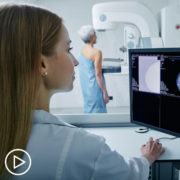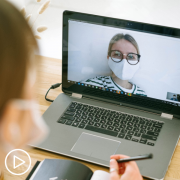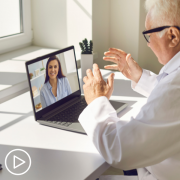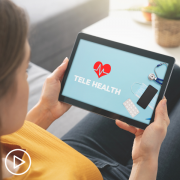Eliminating Disparities in Breast Cancer | Tips for Navigating Inequities
Eliminating Disparities in Breast Cancer: Tips for Navigating Inequities from Patient Empowerment Network on Vimeo.
How can breast cancer patients and healthcare providers advocate for underrepresented patients? Expert Dr. Demetria Smith-Graziani discusses how some providers are working to reduce care disparities and shares patient advice to help ensure optimal care.
Demetria Smith-Graziani, MD, MPH is an Assistant Professor in the Department of Hematology and Medical Oncology at Emory University School of Medicine. Learn more about Dr. Smith-Graziani.
[ACT]IVATION TIP
“…get your list of questions together about your concerns about your diagnosis and your treatment, and if you are feeling like you’re not heard, look for other doctors to talk to to get a second opinion.”
Download Guide | Descargar Guía en Español
See More from [ACT]IVATED Breast Cancer
Related Resources:
|
|
|
|
Transcript:
Lisa Hatfield:
What are some of the actions being taken to combat or eliminate disparities in breast cancer? How can those in marginalized communities best advocate for themselves?
Dr. Demetria Smith-Graziani:
That’s a great question, and I want to start by saying that the true burden should be on healthcare providers of those within the healthcare system to reduce and eliminate disparities in breast cancer, because patients already have enough to deal with and are receiving discrimination and structural racism from society at large and within the healthcare system. So for providers, it’s important for us to really take a good hard look at our practices with patients, think about the way that we are relating to patients, are we making any assumptions about treatments our patients may or may not want, or may or may not be a candidate for. Are we making those assumptions based on something not related to factual data, like their breast cancer itself or other health problems they have, are we making those assumptions based on their insurance status, based on where they live, based on other social factors like race.
It’s important for us to really reflect on that and think about how we can be more equitable in the way that we deliver our care. It’s also important for us to advocate for our patients to make sure that they are receiving the treatment that they need, and sometimes that means advocating to their insurance company, advocating to our health system, our health care employers advocating to the government to make sure that our patients are all receiving high-quality care no matter where they are, and no matter who they are, now, knowing that we live in this unjust society, what can patients do to navigate these disparities and these inequities.
I think it’s important for patients to be as informed as possible to make sure that they are getting all of their questions answered by their doctor, and if you don’t feel like your questions are getting answered, if you don’t feel like your concerns are being appropriately addressed or acknowledged, please make sure that you get a second or a third opinion and talk to another doctor to see if they can answer your questions.
No oncologist is going to be upset with you getting more information from another oncologist about your treatment options, and it’s important for you to pick the doctor that you are comfortable with, that you have a good relationship with and that you feel like you can speak to honestly, and that will give you honest answers, so my activation tip for patients is to get your list of questions together about your concerns about your diagnosis and your treatment, and if you are feeling like you’re not heard, look for other doctors to talk to to get a second opinion.
Share Your Feedback:
Create your own user feedback survey










